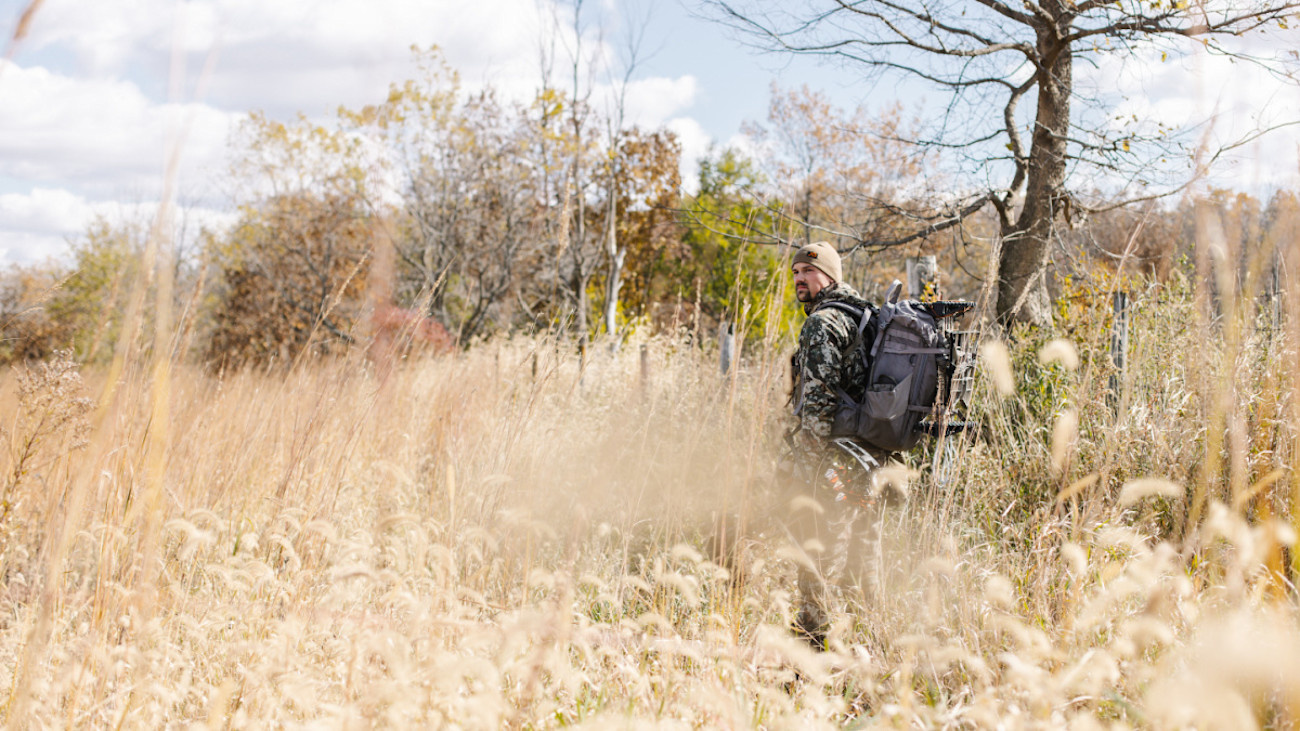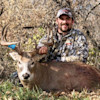

ALEX GYLLSTROM
Meticulously planning access routes is one of the most overlooked aspects of scouting, especially on pressured or public land. If your goal is to wrap your tag around the antlers of a good buck, taking your entry and exit routes seriously is critical. Hunters often identify where they'd like to end up on a property. But failing to plan your access route usually results in spooking the deer out of the area you want to hunt, making for long, slow days in the woods.
Map It Out
Getting a bird's eye view of where you're planning to hunt has been proven to give you an edge. Advancing technology and quality imagery has elevated the map scouting experience. The hybrid view is my favorite way to break down my hunting areas on a map. This shows both a detailed aerial image and topo lines for elevation.
Take your time with the map scouting process. Too often, hunters only identify where they can set up to intercept a buck, and that's where the studying stops. It's crucial to determine where you expect the deer to be at the time when you plan to access your hunting area. I like to utilize the information the map provides with the aerial imagery to get an idea of habitat and how the terrain lays with the topo lines. Of course, you won't really know what you're getting into until you get boots on the ground at the location. Once you determine your route on the map, it's time to dial it in on foot.
Mind the Wind
Don't get ahead of yourself yet. Before you start dropping pins and plotting your strategy, you need to analyze the wind. We could discuss wind strategies and approaches for weeks and barely scratch the surface of the topic, but this will offer some general insight into how to start thinking about wind and your access.
You want to stay downwind of a buck's location. It's common to pay close attention to wind direction around a stand location but then overlook wind direction as it relates to getting into your setup. Falling into this trap is one of the most common ways to tip deer off to your presence.
You need a balance of efficiency and caution to get in unnoticed. Depending on how far you're going, you want to get there with a route that avoids sensitive areas without spreading ground scent too broadly. Try to keep the wind in your face, but not at the risk of taking too much of a detour to your spot.
Be sure you have a good wind checker. Milkweed is my favorite because when you drop or release them into the air, they ride the wind currents and direction anywhere it goes for a long distance. This allows you to see the wind behavior for a much greater distance around your location rather than a puffer that only shows the wind's behavior at your exact location. You can see how the wind reacts to terrain changes, creeks, and thicker habitat. Most hunters think a powder or smoke wind checker is all that's needed. Although these are better than nothing, they pale in comparison to milkweed.
Keeping the wind in your favor through your entry is crucial, but you can't neglect a whitetail's ability to see either.
Terrain is Your Friend
Now that you’re paying attention to wind, you should also know how the wind reacts with the terrain around you. This is why taking time to pre-scout your access routes can be beneficial. It allows you to find the little depressions and ditches to keep the wind in your favor while staying out of sight, especially when closing in on those sensitive areas where bucks spend their daylight hours. Reading the terrain and carefully analyzing your route before the season allows you to troubleshoot, ensuring you're using the best course. Mark your path with pins and a tracker with your favorite mapping app to get an idea of overall distance and subtle turns. This also makes it much easier getting in and out in the dark cleanly.
I'm a huge fan of ditches and drainages for many reasons. They're great for staying out of sight while you access, and they often funnel deer movement so you can scout for hot sign while working into an area. I love setting up on any contour where it creates a natural funnel between a ditch and the bottom of a ridge or drainage where the deer must travel through the bottleneck. Plus, these setups allow incredible, undetected access. Take your milkweed with you to see how the wind behaves around different terrain features to ensure you won't be dealing with any unwanted swirls or drafts that give you away.
I get goosebumps when I find one of these active areas with a ditch leading right to an ideal tree. My favorite spots are where I can use a deep cut, creek ditch, or steep bank with little to no deer travel, and I can take a route directly to my setup tree, knowing there's low risk a deer will cut my scent trail from entry. It can feel almost like you're cheating. You can hunt these rare spots multiple times with the right wind without over-pressuring the area.
No comments:
Post a Comment